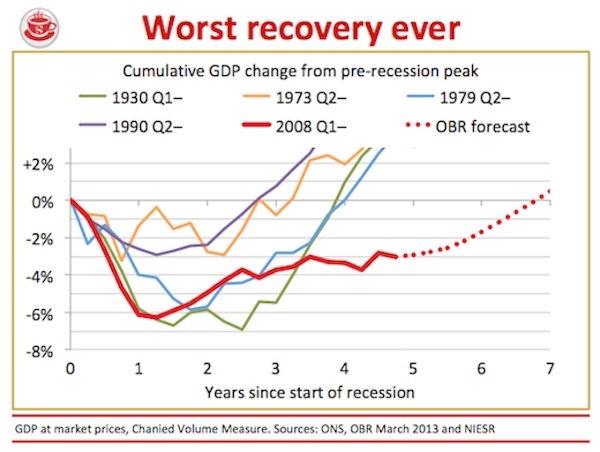Those of a nervous disposition should not click beyond the link. What follows are a few graphs that sum up what’s very hard to spin out of: the extent to which our economic situation has worsened, and how bleak the future looks. The Chancellor started by saying he’d cut the deficit by a third, not a quarter. That’s one way of putting it. Another way is to say that debt is up 38 per cent under the coalition so far, and is set to double:
 George Osborne’s targets involve ratios, not absolute levels of debt. Here is how the outlook on his debt/gdp ratio has changed since his first budget:
George Osborne’s targets involve ratios, not absolute levels of debt. Here is how the outlook on his debt/gdp ratio has changed since his first budget:
And that’s the optimistic view. Citi doesn’t think (pdf) the ratio will fall at all. Three years ago, George Osborne was talking about abolishing the structural deficit. Put the OBR’s 2015 projection next to those the IMF have for the rest of the world and it seems he’ll now fight the next general election with the…
 The impact of inflation, paired with low salary growth, is perhaps more meaningful than any of the above:
The impact of inflation, paired with low salary growth, is perhaps more meaningful than any of the above:
The same is true for the economy. Four years ago, The Spectator ran a cover asking if we had entered a Japanese-style lost decade. Here’s the answer: GDP per head.
So, all told, this is the…
But there is some good news: the fall in real wages makes it cheaper for companies to keep workers on and hire more. Employment, as ths OBR says, “continues to surprise on the upside.” One of the undoubted successes of Osborne’s strategy is that there are more people in work than ever before:












Comments